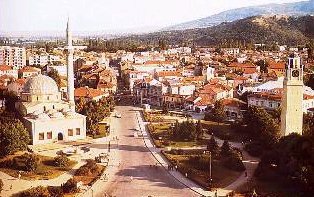Traditionally a strong trading center, Bitola is also known as a town of the consuls. At one time during the Ottoman rule, there were 12 consulates stationed there. There were a number of schools in the town, a military academy (the famous Turkish reformer Kemal Ataturk was educated there), as well as many other cultural associations which were established at that time.
Beside Salonika, Bitola was the center of the Macedonian revolutionary activities, and in 1893 a group of Macedonian intellectuals led by Dame Gruev formed the so called Macedonian Revolutionary Organization (MRO). The Bitola Revolutionary Group became the main bastion of the Macedonian National Liberation Movement, and ten years later, it became a torch of the famous Ilinden Uprising. However, the consequences of the Ilinden Uprising, the Balkan Wars, the World War I, and especially the newly established borders, stopped the natural connections with the Balkan centers, and at the same time, caused new miseries and sufferings among the population in this region. Bitola has had its revival after the World War II liberation from the Nazi occupation forces on November, 4, 1944. During its post-war development, the town has gained its modern physiognomy which matches the rich building tradition from the past centuries.
Some cultural and historical monuments in Bitola and the vicinity are the archaeological site of Heraklea Linkestis located some two kilometers from the city center, with the antique theater in the near surrounding on the south of the town, the Old Bazaar, the Orthodox church “St. Dimitrij”, Isak and Jeni Mosque, the Watch Tower.

Virtual Macedonia
Republic of Macedonia Home Page
Here at Virtual Macedonia, we love everything about our country, Republic of Macedonia. We focus on topics relating to travel to Macedonia, Macedonian history, Macedonian Language, Macedonian Culture. Our goal is to help people learn more about the "Jewel of the Balkans- Macedonia" - See more at our About Us page.
Leave a comment || Signup for email || Facebook |
History || Culture || Travel || Politics

















